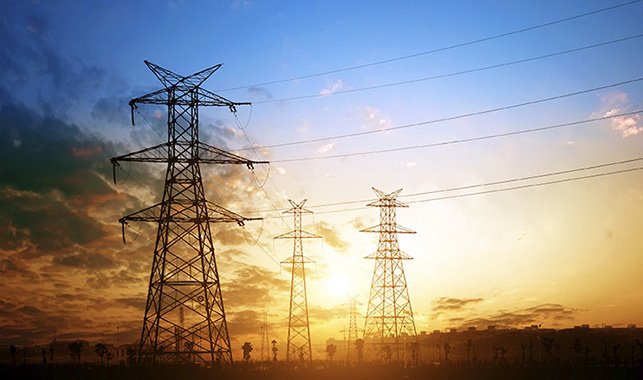Another spate of extreme weather has hit the US. This time we have a triple whammy consisting of last month’s smokeouts from Canadian wildfires (Northeast, Mid-Atlantic, Midwest), torrential rain and flooding in Vermont and upstate New York, and a record-breaking heat wave that continues to impact the South and Southwest. Since warmer air holds more water, global warming intensifies the hydrological cycle and this amplifies both wet and dry extremes – generating the more intense rainfall and excessively parched conditions that lead to floods and wildfires, respectively. In the South/Southwest heat wave, the higher temperatures driven by greenhouse gas buildup may be further amplified by the start of the El Niño climate pattern in the Pacific Ocean, a periodic event that typically drives a substantial increase in global temperature.
The sustained triple-digit temperatures in the South and Southwest are, as usual, generating urgent conversations about the capacity of the electricity grid to keep power flowing in the face of increased cooling demand. So far, grid operators have been able to meet these needs, but the North American Electric Reliability Corporation (NERC), a nonprofit group that analyzes the reliability and resilience of the grid, consistently warns of the threat to performance from extreme weather events that continue to increase in duration and severity. NERC’s analyses are carefully studied by grid operators and policymakers throughout the country, particularly in view of some recent grid failures that had catastrophic consequences. In February 2021, for example, electric grid operators in Texas were unable to provide power to large swaths of the state during a severe ice storm, resulting in outages that shut off heat and running water to many millions of residents. The poor resilience of the Texas grid in the face of extreme weather had many causes, but weak state regulation of the nonprofit system operator ERCOT (Electricity Reliability Council of Texas) and the profit-making public utilities that supply consumers likely contributed. The Texas grid is also isolated from the large Eastern and Western Interconnections that supply electricity to the other 47 continental states, inhibiting power transfers that might have lessened the impact of the storm.
The performance of the South and Southwest electricity grids in the current heat wave is being closely watched and is sure to bear on the ongoing conversations and policymaking crucial to greening the national grid. Carbon emissions from the US electricity sector have been substantially decreasing with the decline of coal-fired plants over the past decade, but natural gas still remains the largest power source – last year generating nearly twice the electricity of all renewable sources combined. The Biden administration is committed to a zero-emissions electricity grid by 2035, a key step in reaching economywide “net zero” emissions by mid-century given that heavy electrification of end uses (like cars) figures prominently in the plans. This will require enormous growth in wind and solar power. The challenge this poses to the resilience and reliability of the grid is that, unlike natural gas, both of these renewables are intermittent and consequently require simultaneous deployment of energy storage technologies to absorb excess power and release it when sunshine and wind are not abundant.
Unlike the 2021 collapse, so far ERCOT has done an excellent job of delivering power in the face of increased demand during the current Texas heat wave. The American Clean Power Association (ACP), a national trade group that represents the renewable power industry, has analyzed data provided by ERCOT for June 19-30 and draws an impressive conclusion: during that record-breaking demand period, renewable resources delivered an average of 30% of the Texas grid’s power needs during the peak 10% of demand hours. ACP notes that Texas ranks first nationwide in installed wind energy capacity and second in solar and energy storage. If this strong performance continues, it should dampen the message of renewable power critics and encourage other parts of the South and Southwest to build out their own infrastructures for generation and delivery of renewable electricity.
What’s happening in Texas and elsewhere represents a vision for grid transformation in which fossil fuel-fired generation is replaced by wind and solar farms, but the basic design of large centralized power plants connecting to long transmission lines persists. However, another emerging trend is the expansion of small distributed sources, exemplified by rooftop solar. Long considered a small niche market, rooftop solar is gaining recognition: New England grid regulators recently decided to close a gas-fired power plant in part because rooftop solar reduced electricity demand enough to make the plant unnecessary. Another new development is General Motors’ decision to sell bidirectional charging systems, which will enable EV buyers to export power to their homes. Since power can also be exported from homes to local community grids, the projected explosion in EV sales by 2030 could create millions of mobile electric power units that might help to decentralize the electricity system, creating energy independence at local scales. The optimal balance of large and small grids in a decarbonized electricity world is very much up for debate, with cost efficiency and resilience to extreme weather as key elements in the equation.
By passing the mammoth Infrastructure Investment & Jobs and Inflation Reduction Acts, Congress has at last enacted policy sufficient to aggressively tackle grid decarbonization, but more work remains to remove some frustrating roadblocks to fast progress. Buildout of solar arrays, wind farms and energy storage requires more robust materials supply than we presently have, including for key minerals such as cobalt and lithium that the US presently imports. Domestic reserves of these metals exist, but early attempts to create US-based supply chains are meeting significant resistance because of the environmental and human costs associated with mining. Long delays in building new energy projects are another issue, with the parties at loggerheads over how broadly to enact permitting reforms that, to be most effective, will require expediting environmental reviews under the bedrock National Environmental Policy and Endangered Species Acts. The worsening extreme weather reminds us of the urgent need to reenvision how we protect lands, waters and biodiversity under these laws – protection that must now be balanced with the inexorable demands of an industrial-scale energy transition that has to be enacted without delay.
________________________
https://www.carbonbrief.org/mapped-how-climate-change-affects-extreme-weather-around-the-world/
https://www.nerc.com/pa/RAPA/PA/Performance%20Analysis%20DL/NERC_SOR_2023_Overview.pdf
https://www.texastribune.org/2021/02/16/texas-wind-turbines-frozen/
Peter Fox-Penner, Power After Carbon: Building a Clean, Resilient Grid (Harvard University Press, 2020), https://www.bu.edu/igs/research/articles-reports/energy-systems-of-the-future/power-after-carbon/
https://cleanpower.org/news/clean-power-sustains-texas-grid-july-heatwave-2023/
https://www.csis.org/analysis/permitting-reform-debt-ceiling-bill-first-step-more-come
https://www.wri.org/insights/critical-minerals-us-climate-goals

